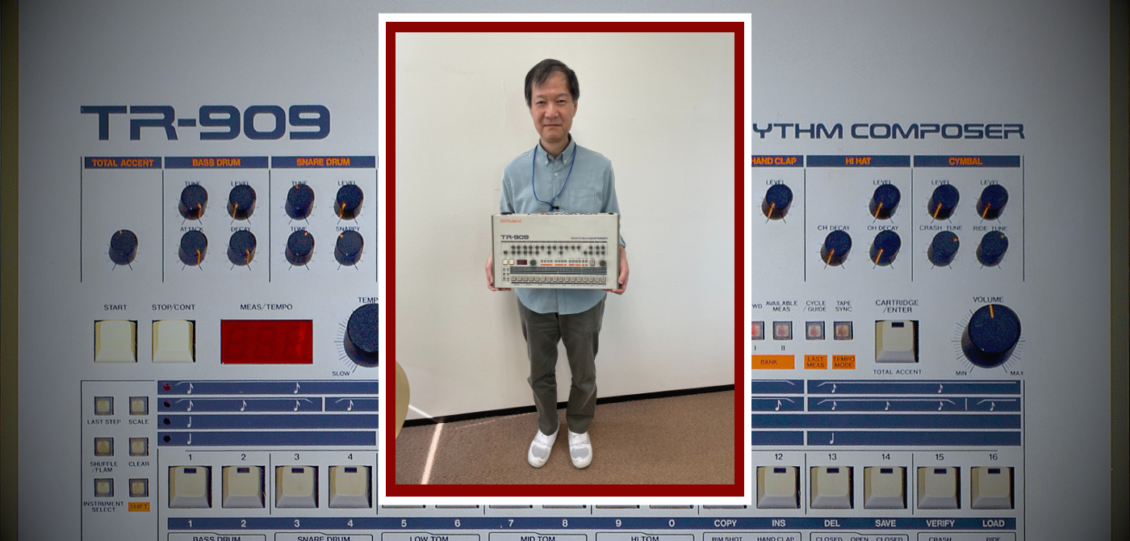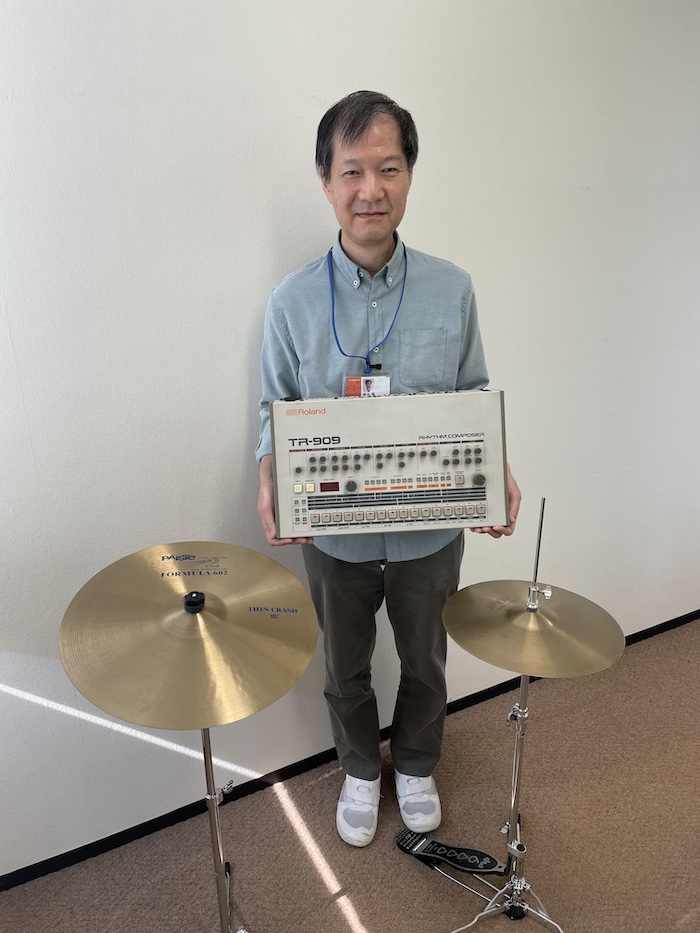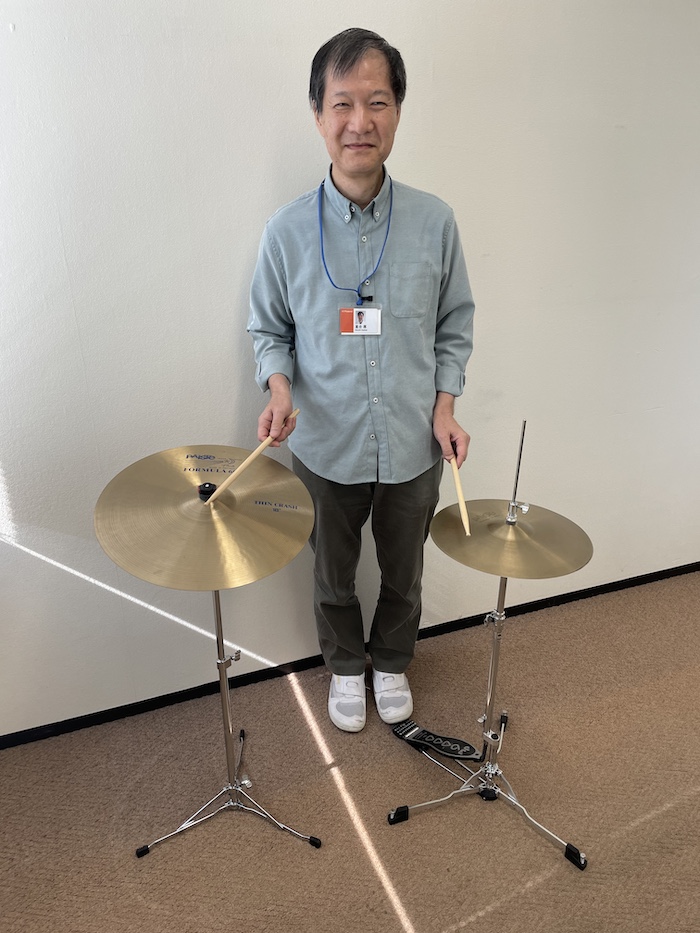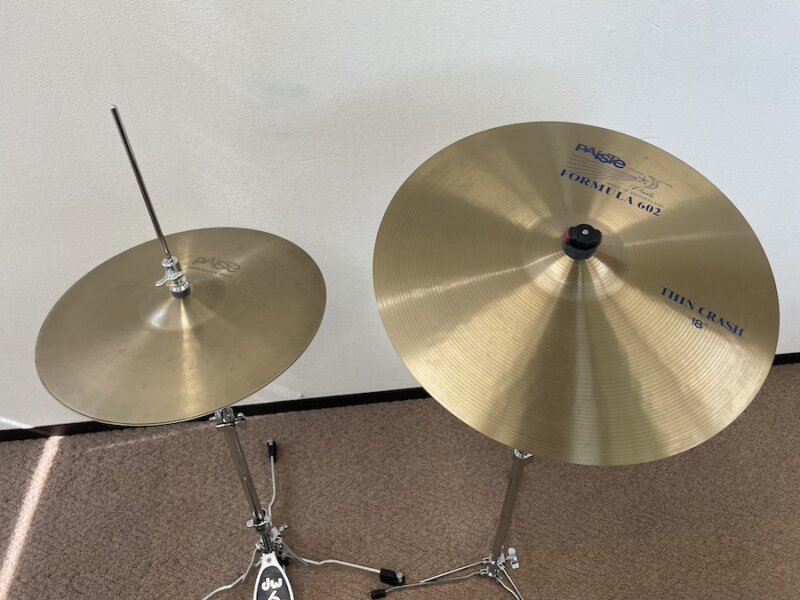CD, CD Çalar, DVD, DVD Çalar, SACD, LP, Plak Çeşitleri ve Fiyatları

Meet Atsushi Hoshiai aka Mr 909, the person responsible for the 909’s iconic hi-hat and cymbal samples. This is the story of the creation of one of the most famous drum machines of all time, the Roland TR-909.
It’s hard to understate the impact of the Roland TR-909. Released in 1983, the hybrid analog and digital drum machine has become a techno and dance music staple, with its sounds gracing countless numbers of tracks. From its earth-quaking thud of a kick to the knife-like slash of its sampled hi-hats, it’s hard to imagine dance music without it.

Development of the 909 began in 1982. Intended to be the follow-up to the TR-808, it went through a number of names (TR-880, TR-880D, TR-909D) before settling on the now-familiar TR-909. Unlike its predecessor, which was all analog, the 909 featured sampled hi-hats, ride, and crash sounds, captured at a very crisp six bits, to complement the analog kick, snare, toms, and other sounds.
[quote align=right text=”Hoshiai-san is still a Roland employee. He’s known affectionately around the office as Mr 909″]
The digital work on the drum machine was done by Atsushi Hoshiai. The development team was headed by Tadao Kikumoto https://articles.roland.com/tadao-kikumoto-exclusive-conversation/, central to the creation of the TR-808, TB-303, TR-606, and MC-202. Having only been in the company for a total of three months, Hoshiai-san was almost immediately thrown into the deep end. “When I joined the company in April 1982,” he said, “there was already a plan to launch a successor to the TR-808.” It was time to sync or swim.
Hoshiai-san is still a Roland employee. He’s known affectionately around the office as Mr 909. This is the story of the making of the 909.
This interview was translated from Japanese and edited for clarity.
Attack: What are you most proud of about the 909?
Atsushi Hoshiai: It was not my intention, but I’m proud that the TR-909 is recognized as an instrument that created a new musical form.
Tough one – but can you name a song that raised a smile as you particularly liked the sound of the 909 in it? How did you feel hearing it?
This is a difficult question for me because I don’t listen to the kind of music that the TR-909 is used for on a daily basis. (Hoshiai is a jazz enthusiast.) Around 1990, when I heard music with the 909 kick going untz untz, I thought someone discovered a new way to use it.
Looking back, did you anticipate the long-lasting influence that the TR-909 would have on music production and culture? What aspects of its legacy surprise you the most?
I never expected it. I was surprised that people move the tone knobs while playing the rhythm patterns or songs.
The TR-909 combined analog and digital components in a unique way for its time. Can you elaborate on the decision-making process behind this hybrid approach and its impact on the sound of the TR-909?
Originally, we developed the sound engine so that everything would be done in analog. We achieved better sounds with the drum instruments (kick, snare, and toms) than on previous drum machines. However, the cymbals (hi-hat, ride, and crash) did not produce a sound that could satisfy our demands.

With the development deadline looming, we decided that it would be impossible to continue using analog any further and so we changed our policy to use digital technology only for the cymbals.
Why didn’t Roland go with 100% samples like the later TR-707?
The reason why we stuck to analog sound sources was because we were aiming for a drum synthesizer. Today, it is easy to change sounds in real-time while playing digital (samples), but this was impossible with the digital technology of the time. The only way to change tones in real-time by moving knobs was to use analog sound sources.
However, the needs of the times demanded realistic acoustic sounds rather than synthesizer-like tone changes, and this led to sampling methods such as those used in the TR-707.
[quote align=right text=”Incidentally, I still use the same hi-hat cymbal combination when performing in my acoustic jazz band.”]
You have said that you had a specific sound in mind for the samples. How did you arrive at this sound in your head?
I have been playing music as an amateur drummer since my school days. I brought in my personal, most favorite cymbals and sampled them.

The top hi-hat was a 14” PAiSTe Sound Edge Top and the bottom was a 14” A. Zildjian New Beat Bottom. For the crash and ride, I used a PaiSTe 18″ Thin Crash. The crash and ride were the same cymbal. For the crash I struck it on the edge and for the ride I struck it on the bow.
Incidentally, I still use the same hi-hat cymbal combination when performing in my acoustic jazz band.
When you sampled the microphone signal, was there any EQ or compression? Do you remember the mic? Was there a microphone preamp?
The microphone was the best one available in the company at that time, a Sony C-38. The tape recorder, a Pioneer reel-to-reel unit, was also in the company. I don’t remember the preamplifier. I think it was possible to connect the microphone to the tape recorder directly. No EQ or compression was applied but the amplitude was processed on a computer after digitization.
The recording was not done in the Roland in-house studio but on an office floor after the other employees had left. This was the result of searching for a place with moderate ambience/reverb.
At that time, we had an A/D converter that we built in-house and connected it to the computer to analyze the sound of the instruments. Incidentally, the sound of the TR-909’s toms was based on the results of the analysis of the sound of acoustic toms with that tool, and we configured the analog circuit based on the results of that analysis.
How many people needed to agree the instrument ‘is complete and ready for release’? Was there ever a case where a colleague was not fully content?
There were only three of us. Mr. Kikumoto was the actual product planning leader and the designer of the kick sound. Mr. Oe was the analog sound source designer. And there was me. I was in charge of the microcomputer program.
Although we did not think we had reached a satisfactory point, we could not extend the development period and decided to launch the product anyway.
Given its enormous success, this may seem strange – but looking back, is there anything you wish you had done differently?
No, nothing. The success of this instrument has been made by all the artists who have played it. This has all been beyond our intention – and also the result of both the strengths and weaknesses of the instrument – so we just have to accept it and celebrate.
[social-links heading=”Follow Attack Magazine” facebook=”https://www.facebook.com/attackmag” twitter=”https://twitter.com/attackmag1″ instagram=”https://www.instagram.com/attackmag/” youtube=”https://www.youtube.com/user/attackmag” soundcloud=”https://soundcloud.com/attackmag” tiktok=”https://www.tiktok.com/@attackmagazine”]
[product-collection]
attackmagazine

Meet Atsushi Hoshiai aka Mr 909, the person responsible for the 909’s iconic hi-hat and cymbal samples. This is the story of the creation of one of the most famous drum machines of all time, the Roland TR-909.
It’s hard to understate the impact of the Roland TR-909. Released in 1983, the hybrid analog and digital drum machine has become a techno and dance music staple, with its sounds gracing countless numbers of tracks. From its earth-quaking thud of a kick to the knife-like slash of its sampled hi-hats, it’s hard to imagine dance music without it.

Development of the 909 began in 1982. Intended to be the follow-up to the TR-808, it went through a number of names (TR-880, TR-880D, TR-909D) before settling on the now-familiar TR-909. Unlike its predecessor, which was all analog, the 909 featured sampled hi-hats, ride, and crash sounds, captured at a very crisp six bits, to complement the analog kick, snare, toms, and other sounds.
[quote align=right text=”Hoshiai-san is still a Roland employee. He’s known affectionately around the office as Mr 909″]
The digital work on the drum machine was done by Atsushi Hoshiai. The development team was headed by Tadao Kikumoto https://articles.roland.com/tadao-kikumoto-exclusive-conversation/, central to the creation of the TR-808, TB-303, TR-606, and MC-202. Having only been in the company for a total of three months, Hoshiai-san was almost immediately thrown into the deep end. “When I joined the company in April 1982,” he said, “there was already a plan to launch a successor to the TR-808.” It was time to sync or swim.
Hoshiai-san is still a Roland employee. He’s known affectionately around the office as Mr 909. This is the story of the making of the 909.
This interview was translated from Japanese and edited for clarity.
Attack: What are you most proud of about the 909?
Atsushi Hoshiai: It was not my intention, but I’m proud that the TR-909 is recognized as an instrument that created a new musical form.
Tough one – but can you name a song that raised a smile as you particularly liked the sound of the 909 in it? How did you feel hearing it?
This is a difficult question for me because I don’t listen to the kind of music that the TR-909 is used for on a daily basis. (Hoshiai is a jazz enthusiast.) Around 1990, when I heard music with the 909 kick going untz untz, I thought someone discovered a new way to use it.
Looking back, did you anticipate the long-lasting influence that the TR-909 would have on music production and culture? What aspects of its legacy surprise you the most?
I never expected it. I was surprised that people move the tone knobs while playing the rhythm patterns or songs.
The TR-909 combined analog and digital components in a unique way for its time. Can you elaborate on the decision-making process behind this hybrid approach and its impact on the sound of the TR-909?
Originally, we developed the sound engine so that everything would be done in analog. We achieved better sounds with the drum instruments (kick, snare, and toms) than on previous drum machines. However, the cymbals (hi-hat, ride, and crash) did not produce a sound that could satisfy our demands.

With the development deadline looming, we decided that it would be impossible to continue using analog any further and so we changed our policy to use digital technology only for the cymbals.
Why didn’t Roland go with 100% samples like the later TR-707?
The reason why we stuck to analog sound sources was because we were aiming for a drum synthesizer. Today, it is easy to change sounds in real-time while playing digital (samples), but this was impossible with the digital technology of the time. The only way to change tones in real-time by moving knobs was to use analog sound sources.
However, the needs of the times demanded realistic acoustic sounds rather than synthesizer-like tone changes, and this led to sampling methods such as those used in the TR-707.
[quote align=right text=”Incidentally, I still use the same hi-hat cymbal combination when performing in my acoustic jazz band.”]
You have said that you had a specific sound in mind for the samples. How did you arrive at this sound in your head?
I have been playing music as an amateur drummer since my school days. I brought in my personal, most favorite cymbals and sampled them.

The top hi-hat was a 14” PAiSTe Sound Edge Top and the bottom was a 14” A. Zildjian New Beat Bottom. For the crash and ride, I used a PaiSTe 18″ Thin Crash. The crash and ride were the same cymbal. For the crash I struck it on the edge and for the ride I struck it on the bow.
Incidentally, I still use the same hi-hat cymbal combination when performing in my acoustic jazz band.
When you sampled the microphone signal, was there any EQ or compression? Do you remember the mic? Was there a microphone preamp?
The microphone was the best one available in the company at that time, a Sony C-38. The tape recorder, a Pioneer reel-to-reel unit, was also in the company. I don’t remember the preamplifier. I think it was possible to connect the microphone to the tape recorder directly. No EQ or compression was applied but the amplitude was processed on a computer after digitization.
The recording was not done in the Roland in-house studio but on an office floor after the other employees had left. This was the result of searching for a place with moderate ambience/reverb.
At that time, we had an A/D converter that we built in-house and connected it to the computer to analyze the sound of the instruments. Incidentally, the sound of the TR-909’s toms was based on the results of the analysis of the sound of acoustic toms with that tool, and we configured the analog circuit based on the results of that analysis.
How many people needed to agree the instrument ‘is complete and ready for release’? Was there ever a case where a colleague was not fully content?
There were only three of us. Mr. Kikumoto was the actual product planning leader and the designer of the kick sound. Mr. Oe was the analog sound source designer. And there was me. I was in charge of the microcomputer program.
Although we did not think we had reached a satisfactory point, we could not extend the development period and decided to launch the product anyway.
Given its enormous success, this may seem strange – but looking back, is there anything you wish you had done differently?
No, nothing. The success of this instrument has been made by all the artists who have played it. This has all been beyond our intention – and also the result of both the strengths and weaknesses of the instrument – so we just have to accept it and celebrate.
[social-links heading=”Follow Attack Magazine” facebook=”https://www.facebook.com/attackmag” twitter=”https://twitter.com/attackmag1″ instagram=”https://www.instagram.com/attackmag/” youtube=”https://www.youtube.com/user/attackmag” soundcloud=”https://soundcloud.com/attackmag” tiktok=”https://www.tiktok.com/@attackmagazine”]
[product-collection]